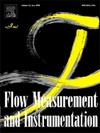Interstage follow-up characteristics of displacement reverse follow-up proportional valve
IF 2.3
3区 工程技术
Q2 ENGINEERING, MECHANICAL
引用次数: 0
Abstract
In the displacement follow-up proportional valve, the main spool moves with the pilot poppet, and the opening of the main valve port is limited by the stroke of the pilot spool, the flow amplification capacity of the main valve is restricted seriously. The displacement reverse follow-up proportional valve configuration with the displacement follow-up ratio exceeding 1 is proposed in this paper. The mathematical model is established to identify key factors affecting the stability of the main spool and the displacement follow-up ratio, and the main structural parameters of the proportional valve are determined. Subsequently, AMESim is employed to analyse the interstage follow-up characteristics under varying working conditions, and the accuracy of the simulation model is validated experimentally. The research results indicate that the dead zone of the pilot valve is 0.37 mm, and the main spool can effectively achieve reverse follow-up of the pilot poppet while maintaining a stable displacement follow-up ratio of approximately 1.2. When the inlet pressure exceeds 5 MPa, the step response rise time of the main spool is less than 10 ms, and the steady-state displacement follow-up error is below 5 %. Furthermore, the main spool can reliably track the pilot cylinder displacement sinusoidal input signal with a frequency below 20 Hz and the displacement lag time of less than 1 ms.
位移反随动比例阀级间随动特性研究
排量随动比例阀中,主阀芯随先导阀芯运动,主阀口开度受先导阀芯行程的限制,主阀的流量放大能力受到严重限制。提出了位移随动比大于1的位移反随动比例阀构型。建立数学模型,识别影响主阀芯稳定性和位移随动比的关键因素,确定比例阀的主要结构参数。随后,利用AMESim对不同工况下的级间随动特性进行了分析,并对仿真模型的准确性进行了实验验证。研究结果表明,先导阀的死区为0.37 mm,主阀芯能有效实现先导筒的反向随动,同时保持稳定的位移随动比约为1.2。当进口压力超过5 MPa时,主阀芯阶跃响应上升时间小于10 ms,稳态位移随动误差小于5%。此外,主阀芯能够可靠地跟踪先导气缸位移正弦输入信号,频率低于20 Hz,位移滞后时间小于1 ms。
本文章由计算机程序翻译,如有差异,请以英文原文为准。
求助全文
约1分钟内获得全文
求助全文
来源期刊

Flow Measurement and Instrumentation
工程技术-工程:机械
CiteScore
4.30
自引率
13.60%
发文量
123
审稿时长
6 months
期刊介绍:
Flow Measurement and Instrumentation is dedicated to disseminating the latest research results on all aspects of flow measurement, in both closed conduits and open channels. The design of flow measurement systems involves a wide variety of multidisciplinary activities including modelling the flow sensor, the fluid flow and the sensor/fluid interactions through the use of computation techniques; the development of advanced transducer systems and their associated signal processing and the laboratory and field assessment of the overall system under ideal and disturbed conditions.
FMI is the essential forum for critical information exchange, and contributions are particularly encouraged in the following areas of interest:
Modelling: the application of mathematical and computational modelling to the interaction of fluid dynamics with flowmeters, including flowmeter behaviour, improved flowmeter design and installation problems. Application of CAD/CAE techniques to flowmeter modelling are eligible.
Design and development: the detailed design of the flowmeter head and/or signal processing aspects of novel flowmeters. Emphasis is given to papers identifying new sensor configurations, multisensor flow measurement systems, non-intrusive flow metering techniques and the application of microelectronic techniques in smart or intelligent systems.
Calibration techniques: including descriptions of new or existing calibration facilities and techniques, calibration data from different flowmeter types, and calibration intercomparison data from different laboratories.
Installation effect data: dealing with the effects of non-ideal flow conditions on flowmeters. Papers combining a theoretical understanding of flowmeter behaviour with experimental work are particularly welcome.
 求助内容:
求助内容: 应助结果提醒方式:
应助结果提醒方式:


